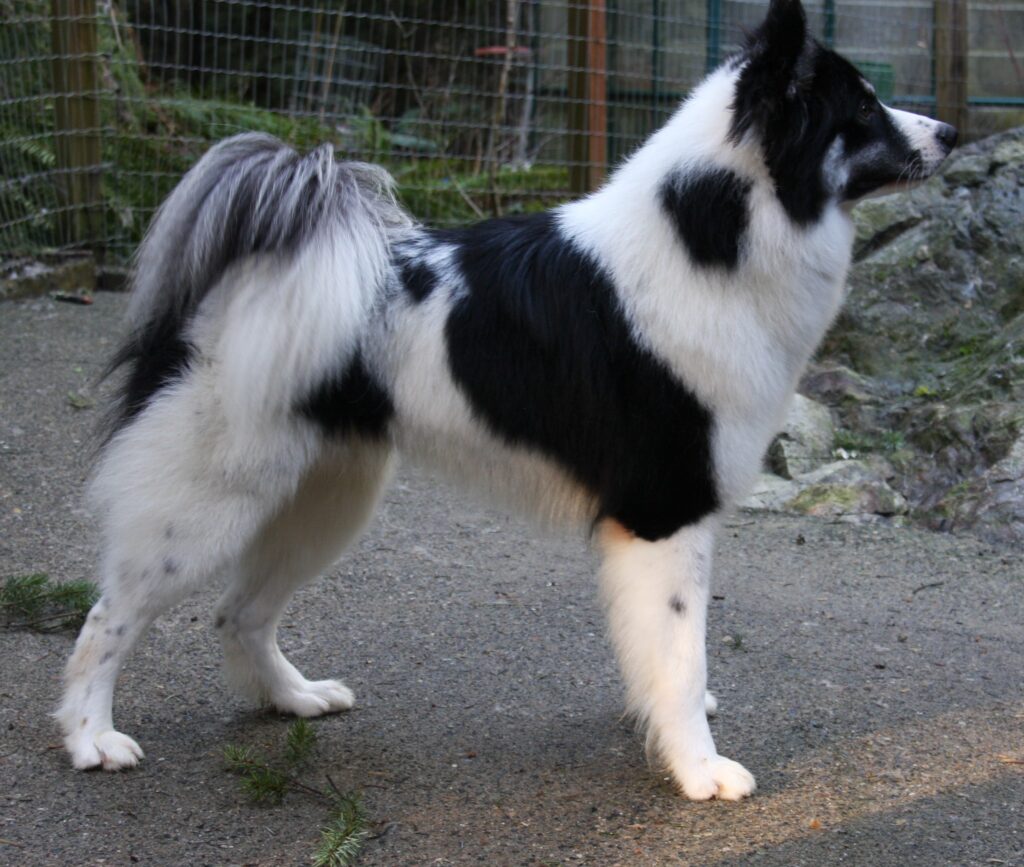History and Origin: An ancient breed native to the northeast area of Russia. Used primarily as sled dogs, hunting dogs, reindeer herders, and companions. They may have been used as long ago as 8000 years, but first references to the breed are dated at 1633. The breed was highly prized by the Yakut people who used them for transport, hauling game to camp, sledding and more, a truly indispensible canine. They were treated more as family members and not just as a domestic animal. As the need for sledding dogs for transportation and hauling diminished so too did the breed numbers. But fanciers rallied to the need to save this breed and it was recognized by the Russian Federation in 2004, a breed standard was adopted by FCI in 2019 and the CKC granted miscellaneous /listed status in July, 2022.
General Appearance: A spitz type breed, with curled tail over back, and prick or semi prick ears. Strong and quite powerful, level back slightly sloping, rather long legged, and carrying a thick double coat. Eyes are brown or blue or both and almond shaped. Size: Males 22-23 inches and 55-65 pounds Females 20 -22 inches and 45-55 pounds.
Coat and Colour: coat is thick and double with a downy undercoat, affording great protection in the arctic climateof his homeland. The breed will shed (or blow) each season and when living in warmer climates the coat will not grow as dense.. The coat is glossy straight and course. Many coat colours and patterns of combinations with white markings are recognized. Patches of colour are common. White is the only solid colour allowable. A mane on the neck is especially pronounced in males. Feathering is evident on the backs of front and hind legs. The tail is also fringe feathered. The coat tends to release dirt easily and only needs regular brushing for maintenance.
Feeding: the breed is notoriously picky regarding food. This is a remaining trait from their survival days in the severe Siberian climate that allowed them to be thrifty and efficient with food allowance. Young dogs will remain quite lean and don’t mature until well after two years when they will begin to add bodily mass. Finding a food preference for them can often be quite a task.
Training and Obedience:A very biddable breed, they learn quickly and are eager to please their owners. They are intelligent and eager students at whatever they are being taught. They require training that is fair and gentle, as harsher methods tend to distress their kind nature. The breed is capable of excelling in many different performance sports beyond sledding and snow games. They can be very accomplished in other areas such as rally, obedience, herding and dock diving.
Activity: The breed is active, bold and curious and requires plenty of daily exercise in a fenced safe area as they still have plenty of prey drive ( they were hunters in Russia) They love to run and their common gaits are the trot and gallop. Dog parks are not recommended. With all breeds, they must be leashed when in public areas.
Temperament: This breed is happiest with a close association to family and they require consistent human contact. They are gentle and affectionate and excellent with children. They may be aloof and reserved with strangers. They are very social and accepting of other dogs but always the first meeting should be controlled and cautious. When they perceive a threat from another dog or predator they will become aggressive. They do best in a family situation and excel as part of a family unit.




